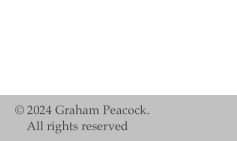 |
 |
||||
New New IllusionismIllusion, Etymology: Middle English, from Middle French, from Late Latin illusion-, illusio, from Latin, action of mocking, from illudere to mock at, from in- + ludere to play, mock) My paintings start with pouring. Organic painterly movements of pronounced colour contrast, which require the use of surface undulation and irregular outside shaping to resolve their compositions. I further emphasize the optical ambiguity of the paintings’ surfaces by the painting in of illusionistic shadows and linear shapes that create perspective. In classical painting and drawing, the illusion of a third dimension is created by perspective and colour contrasts that primarily depend on tonality. In modern flat abstraction, perspective is largely denied and the “push pull” of colour, the movement of colours back and forth, as Hans Hoffman called it, creates a pronounced, two-dimensional depth. In my present work, I contrast both of these spatial devices. I use classical principles of illusionistic spatial drawing combined with a new way of flat painting - “crazing”- which I refer to as “new new illusionism” to reflect my present preoccupations and my connection with the New New Painting movement. I am intrigued by the spatial paradox created by this combination and the increase in symbolic drawing which it affords. Although my work embodies varied, raised surfaces, these are intended to be de-emphasized in the lighting of the work. An overall, flat lighting is desired, to minimize actual shadow in the work and to allow the physical surface and my painted illusion to control the desired spatial perception. My paintings are not objects nor are they sculptural reliefs. They are conceived as paintings about colour and dimension (impasto) and, in their creation, are addressed by me as such. Graham Peacock, October15 2003 |
|||||
 |
|||||